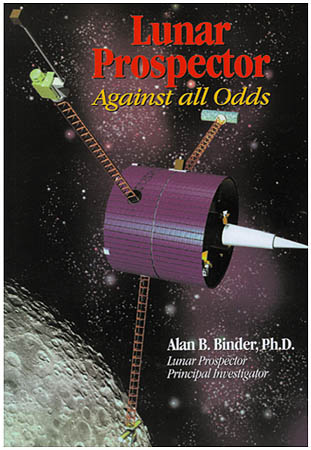Against All Odds

Explanation:
After the Apollo 17 crew returned to Earth on Dec. 17, 1972, the US sent no spacecraft to orbit the Moon until 1994 (Clementine) and 1998 (Lunar Prospector). Both of these were small, cheap missions flown because someone other than NASA wanted them. Clementine was a test of the Defense Departments miniature sensors designed for President Reagans Star Wars, and Prospector flew because of the unrelenting persistence of one person, Alan Binder. Binder had been a leader of the Viking Lander Mars missions in the 1970s but his real interest was the Moon. He realized that NASA was not interested in returning to the Moon and so he assembled a team of volunteers to design a polar orbiter to map the lunar surface composition and its magnetic field and to search for polar ices. Binder sought many private avenues for funding his Lunar Prospector (including Ross Perrot and Pepsi-Cola), but finally won $65 million from NASA as the first in its Faster, Better, Cheaper Discovery program. This thick but readable book is Binders day by day account of the battles to fund, design, build, and fly Prospector. But this is not a normal book, as you can tell from the first two sentences: This book was written for several reasons. The first and foremost is to show the American taxpayer just how badly the national space program and the large aerospace companies, at least Lockheed, are run. This book might be considered a sore losers rant, but Binder is a winner in that he, more than any single person before, got a spacecraft built and flown, all within budget, on time and with excellent scientific results. And NASA? They gave awards to all the Prospector team, except the leader, Alan Binder!
